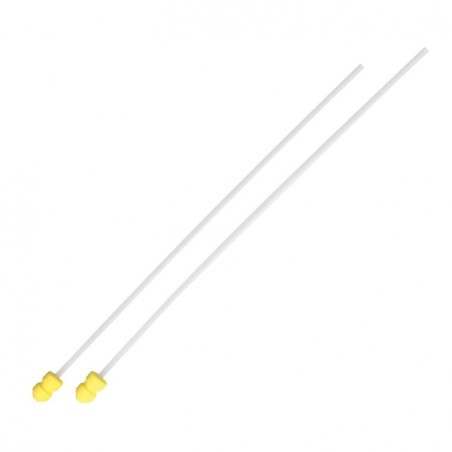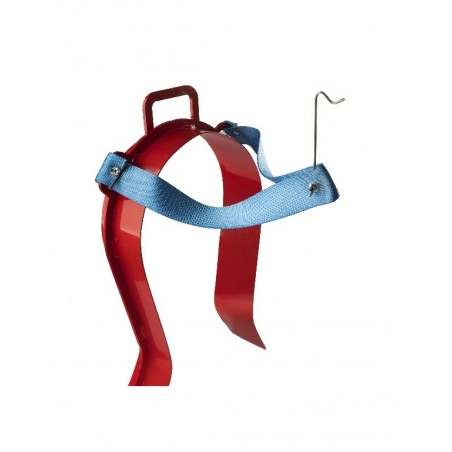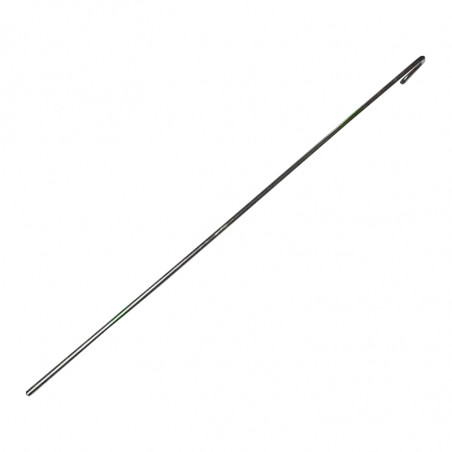In two previous articles with Javier Gil, a specialist in Swine Reproduction and Artificial Insemination, we have reviewed how to perform a good estrus stimulation and heat detection.
In this article we deal with the topic of traditional insemination. Despite being a well-known technique, mistakes are still made with artificial insemination on farms, and questions are raised that we will try to answer.

Cervical insemination
Traditionally, insemination is done by cervical insemination. The catheter is placed in the cervix, the narrow part connecting the vagina to the uterus. This is where the semen is deposited, and the contraction movements of the cervix take up the semen and directs it toward the uterus. In fact, traditional insemination is, in a way, a self-insemination by the sow.
Therefore, it is essential that a proper heat detection has been performed to ensure that the sow is on heat. The female needs to be very stimulated, with the boar in front of her so that the insemination resembles natural mating as much as possible. And the catheter must be well placed in the cervix and avoiding high tension.
What do we mean by “avoiding tension in the catheter?
In order to make cervical insemination faster and easier, in Spain and other countries, hands-free insemination systems have become popular. We must be careful with these systems: in traditional insemination when the catheter is placed, the sow contracts the cervix and it clamps down on the head of the catheter for several seconds or even minutes. In fact, if at that moment we were to pull back on the catheter we would find that it does not come out, that it is locked in place.
After a few minutes, once the cervix has adapted to the catheter, it relaxes. Any breeding technician will have observed this many times: the catheter has been placed and the dose does not go down, then suddenly without any pressure the sow begins to "absorb" the semen quickly. This happens because the cervix has relaxed which allows the dose to pass as it would with semen during natural mating.
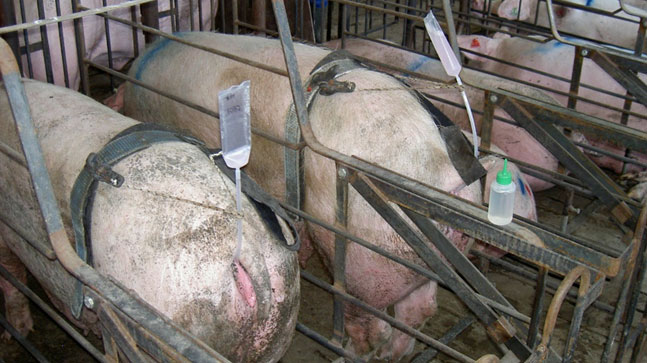
If we are working with hands-free self-insemination (Photo 1), we force the catheter, which is usually quite rigid, to adapt to the device to hold the dose and in doing so, we put strain on the catheter. While the cervix is contracted, this will not be a problem since it is fixed in place, but as soon as the cervix relaxes, if the catheter is under tension, with an angle greater than 90º with respect to the ground,, it may move backwards. Therefore the catheter may move, causing the semen to be deposited in the vagina instead of the cervix, meaning we may see a backflow. In addition to this problem is the fact that with self-insemination, several sows are usually being inseminated at the same time, meaning the likelihood of not noticing this backflow is greater, and therefore, increases the risk of not being able to resolve the problem by re-positioning the catheter.
Is the standard of keeping the catheter in the sow for a while after insemination correct?
We should keep in mind that cervical insemination is an insemination by "flooding." A large amount of semen is deposited in the cervix, and from there it is directed towards the uterus by the contractions of the sow. For this reason, it makes sense to leave the catheter inserted in the cervix for a few minutes to act as a plug while the sow absorbs the semen into the uterus. But this happens within a few minutes after the insemination, so if we leave the catheter in place it should only be for a short time - never an hour or more which sometimes is done.
If we do leave it, it must be done with catheters that have a plug at the end or by "closing" it as some farms do by bending it completely, with a ball of putty, or by any other means.
It will also depend on the type of catheter we're using. Multi-ring or foam catheters have a larger diameter and fill the cervix much more, closing it off well. The spiral catheter plugs the cervix less, since it is narrower and leaves more space between the catheter and the cervix wall, which allows the backwards passage of semen if the catheter is left inside after insemination.
Hygiene during insemination
Undoubtedly, the entire insemination process must be carried out in a hygienic manner. Keeping the environment as clean as possible under the sow, cleaning the vulva, opening the vulva wide to avoid introducing dirt with the catheter, not touching the tip of the catheter with your hands, etc. are measures that must be observed.
Still, as with any disease, doing the same thing will yield different results on different farms. Some farms are able to function well with relatively clean standards, and others will require maximum hygiene. This will depend on infection pressure, the sow's immune system, and especially the timing of insemination. Farms that inseminate repeatedly, with many inseminations at the beginning or end of estrus are more at risk of insemination-associated infections.
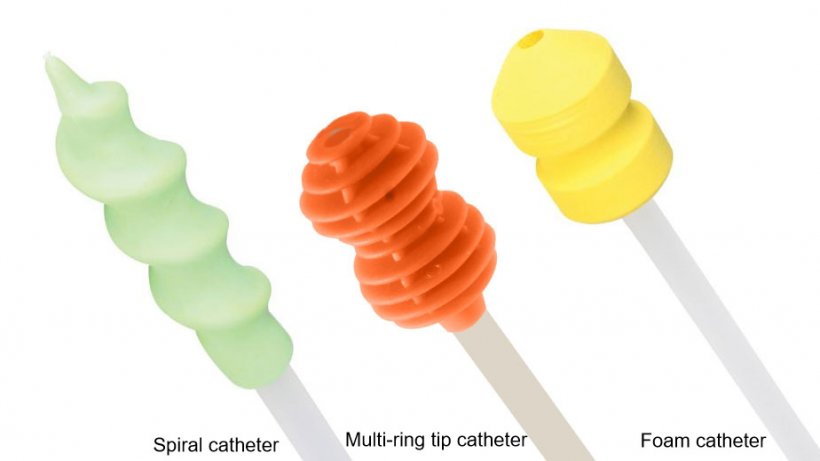
Is one type of catheter better than another?
There is no perfect catheter. They will all work well if well managed. But it is essential to understand that they are different and that they are placed differently to a certain extent.
Spiral catheters simulate the shape of the boar's penis, and they must enter while making a rotating movement. It is a smoother and less traumatic insertion. I find them to be the best choice for Iberian sows, as they are very averse to any contact.
The foam or multi-ringed ones should be placed in one movement. When, on the contrary, the farmer uses several movements, such as tapping, to place them, what happens is that the sow is alerted and she reacts by contracting the cervix. The consequence will be that, when the cervix is totally or partially closed, the catheter will be placed in the vagina or just loosely at the beginning of the cervix.
In my experience, improper catheter placement is one of the most common farm errors and it can often lead to infertility.
Inseminating the stimulated sow with the boar in front, catheter placement in accordance with the type we use, the necessary hygiene measures, and attention to detail are essential if we want to obtain the maximum benefits from artificial insemination.
In the following articles we will address post-cervical insemination.





